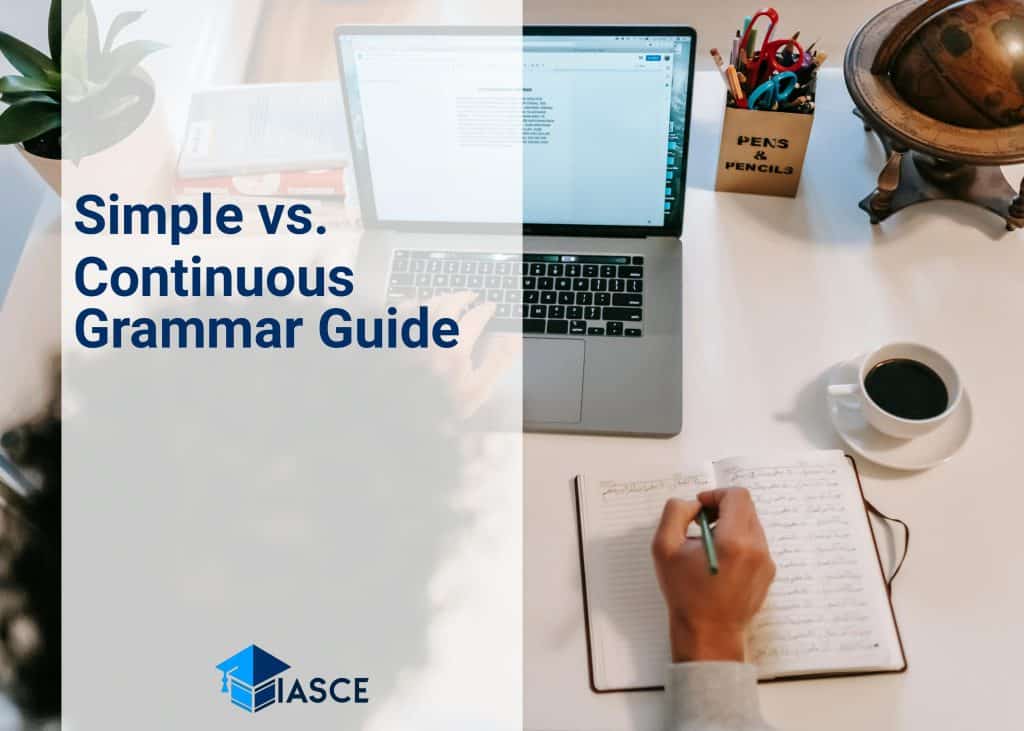If you’ve ever found yourself tangled up in the intricacies of English grammar, don’t worry, you’re not alone. I’m here to shed some light on a common area of confusion: Present Simple vs. Present Continuous tenses. These two tenses might look similar at first glance, but they each have their unique uses and nuances.
Mastering these tenses can significantly improve your English fluency and comprehension. It’s a crucial stepping stone for anyone learning the language. So buckle up as we delve into the intricate world of present tenses – by the end of this guide, you’ll have a firm grasp on when to use which tense.
From everyday conversations to crafting perfect sentences in professional or academic settings, understanding these two commonly used tenses is essential. Let’s start our journey towards becoming proficient users of Present Simple and Present Continuous tenses!
Understanding the Basics: Present Simple
Diving into the world of English grammar, let’s start with Present Simple. It’s one of those fundamental concepts you need to master. This tense is primarily used to describe habits, general truths, and fixed arrangements.
The structure? It’s quite straightforward. For singular subjects (he, she, it), we add an -s or -es to the base form of the verb. Here are a few examples:
- He walks to work every day.
- She enjoys reading historical novels.
- The sun rises in the east.
However, for plural subjects (you, we, they) and ‘I’, there’s no change in the verb:
- They play soccer on weekends.
- I love Italian food.
To create negative sentences in Present Simple tense, we use do not or does not before the base form of verb:
| Subject | Negative Sentence |
|---|---|
| He | He does not like spinach. |
| They | They do not play chess. |
Remember that for asking questions in this tense, do or does is placed at beginning of sentence:
- Do you live in New York?
- Does he know how to cook?
Let’s look at some common signal words often accompanying Present Simple tense:
- Often
- Sometimes
- Usually
- Rarely
- Never
These words hint towards regular actions or routines – key indicators that you’re dealing with Present Simple!
Mastering this basic tense will pave your path towards understanding more complex tenses. So grab your pen (or keyboard) and start practicing! After all, practice makes perfect when it comes to mastering English grammar.
Grasping the Nuances: Present Continuous
When I think about the present continuous tense, it’s a bit like watching a live play. It offers a glimpse into ongoing actions, right in their prime time. This tense is formed with the helping verb ‘be’ (am, is, are) followed by a verb ending in -ing. You’d use it to convey an action that’s happening now or around now.
For example:
- “I’m writing this blog post.”
- “You’re reading these words.”
But beyond its basic usage for current actions, there’s more versatility to this tense than meets the eye. It can also indicate future arrangements or plans you’ve committed to.
Let me give you some examples:
- “I’m meeting my friend for lunch tomorrow.”
It’s important to note that not all verbs can be used in the present continuous form. Certain non-action or stative verbs don’t typically appear in this form because they express states of being rather than actions. Examples include love, know, belong and understand.
Here are some incorrect uses of stative verbs in the present continuous:
| Incorrect | Correct |
|---|---|
| I am loving pizza. | I love pizza. |
| We are knowing her secrets. | We know her secrets. |
Despite its rules and exceptions, mastering the present continuous isn’t as intimidating as it seems! With practice and attention to detail, you’ll soon find yourself using this versatile English tense with ease and confidence.
Conclusion: Mastering English Tenses
Whew! We’ve journeyed through the world of present simple versus present continuous tenses. I hope you share my fascination for these nuances in English grammar that can make a world of difference in your communication.
Remember, practice makes perfect. It’s not enough to just read about it – you need to apply it as well. So, go ahead and start experimenting with these tenses in your daily conversations, writings, and presentations.
Here’s a quick recap:
- Present Simple: Used for general truths, routine actions or habits.
- Present Continuous: Used for ongoing actions happening now or future planned events.
And here are some tips to help you master them:
- Practice writing sentences using both tenses.
- Read extensively to see how writers use these tenses.
- Speak English regularly; conversation is a great way to cement your understanding.
This isn’t the end though! The beauty of language learning is that there’s always more to explore and understand. As you continue on this linguistic journey, keep an open mind and remain curious – you’ll be surprised at how much more there is to learn!
So cheers to mastering the art of English tense usage! Your efforts will soon bear fruit in clearer communication and better understanding of this rich language we call English. You’ve got this!

